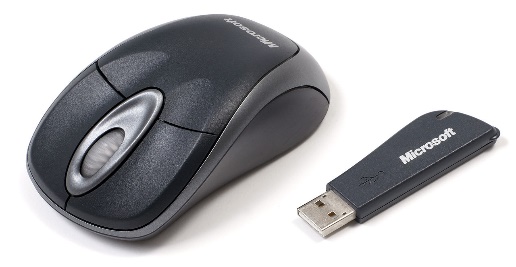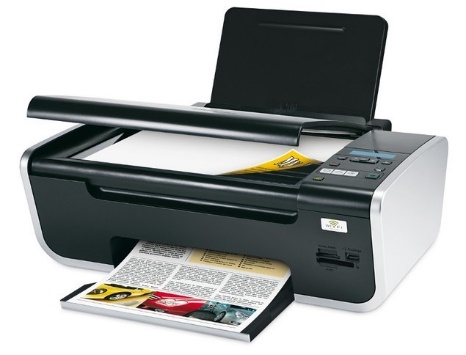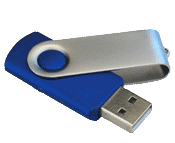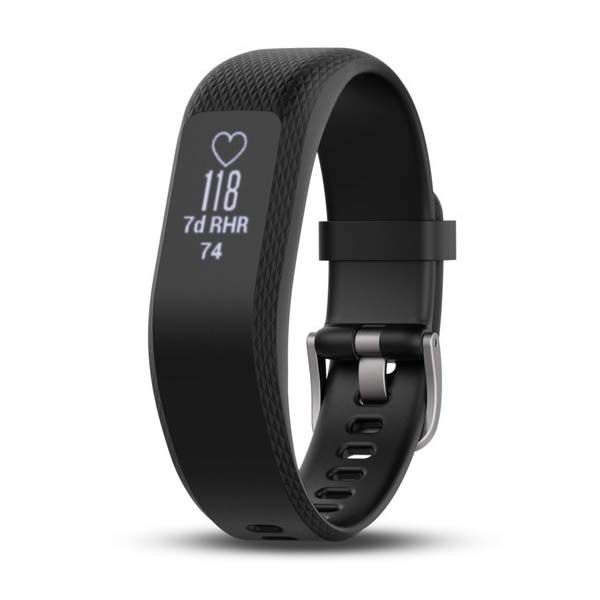1.3: Classifying Various Peripheral Devices
- Page ID
- 14279
\( \newcommand{\vecs}[1]{\overset { \scriptstyle \rightharpoonup} {\mathbf{#1}} } \)
\( \newcommand{\vecd}[1]{\overset{-\!-\!\rightharpoonup}{\vphantom{a}\smash {#1}}} \)
\( \newcommand{\id}{\mathrm{id}}\) \( \newcommand{\Span}{\mathrm{span}}\)
( \newcommand{\kernel}{\mathrm{null}\,}\) \( \newcommand{\range}{\mathrm{range}\,}\)
\( \newcommand{\RealPart}{\mathrm{Re}}\) \( \newcommand{\ImaginaryPart}{\mathrm{Im}}\)
\( \newcommand{\Argument}{\mathrm{Arg}}\) \( \newcommand{\norm}[1]{\| #1 \|}\)
\( \newcommand{\inner}[2]{\langle #1, #2 \rangle}\)
\( \newcommand{\Span}{\mathrm{span}}\)
\( \newcommand{\id}{\mathrm{id}}\)
\( \newcommand{\Span}{\mathrm{span}}\)
\( \newcommand{\kernel}{\mathrm{null}\,}\)
\( \newcommand{\range}{\mathrm{range}\,}\)
\( \newcommand{\RealPart}{\mathrm{Re}}\)
\( \newcommand{\ImaginaryPart}{\mathrm{Im}}\)
\( \newcommand{\Argument}{\mathrm{Arg}}\)
\( \newcommand{\norm}[1]{\| #1 \|}\)
\( \newcommand{\inner}[2]{\langle #1, #2 \rangle}\)
\( \newcommand{\Span}{\mathrm{span}}\) \( \newcommand{\AA}{\unicode[.8,0]{x212B}}\)
\( \newcommand{\vectorA}[1]{\vec{#1}} % arrow\)
\( \newcommand{\vectorAt}[1]{\vec{\text{#1}}} % arrow\)
\( \newcommand{\vectorB}[1]{\overset { \scriptstyle \rightharpoonup} {\mathbf{#1}} } \)
\( \newcommand{\vectorC}[1]{\textbf{#1}} \)
\( \newcommand{\vectorD}[1]{\overrightarrow{#1}} \)
\( \newcommand{\vectorDt}[1]{\overrightarrow{\text{#1}}} \)
\( \newcommand{\vectE}[1]{\overset{-\!-\!\rightharpoonup}{\vphantom{a}\smash{\mathbf {#1}}}} \)
\( \newcommand{\vecs}[1]{\overset { \scriptstyle \rightharpoonup} {\mathbf{#1}} } \)
\( \newcommand{\vecd}[1]{\overset{-\!-\!\rightharpoonup}{\vphantom{a}\smash {#1}}} \)
\(\newcommand{\avec}{\mathbf a}\) \(\newcommand{\bvec}{\mathbf b}\) \(\newcommand{\cvec}{\mathbf c}\) \(\newcommand{\dvec}{\mathbf d}\) \(\newcommand{\dtil}{\widetilde{\mathbf d}}\) \(\newcommand{\evec}{\mathbf e}\) \(\newcommand{\fvec}{\mathbf f}\) \(\newcommand{\nvec}{\mathbf n}\) \(\newcommand{\pvec}{\mathbf p}\) \(\newcommand{\qvec}{\mathbf q}\) \(\newcommand{\svec}{\mathbf s}\) \(\newcommand{\tvec}{\mathbf t}\) \(\newcommand{\uvec}{\mathbf u}\) \(\newcommand{\vvec}{\mathbf v}\) \(\newcommand{\wvec}{\mathbf w}\) \(\newcommand{\xvec}{\mathbf x}\) \(\newcommand{\yvec}{\mathbf y}\) \(\newcommand{\zvec}{\mathbf z}\) \(\newcommand{\rvec}{\mathbf r}\) \(\newcommand{\mvec}{\mathbf m}\) \(\newcommand{\zerovec}{\mathbf 0}\) \(\newcommand{\onevec}{\mathbf 1}\) \(\newcommand{\real}{\mathbb R}\) \(\newcommand{\twovec}[2]{\left[\begin{array}{r}#1 \\ #2 \end{array}\right]}\) \(\newcommand{\ctwovec}[2]{\left[\begin{array}{c}#1 \\ #2 \end{array}\right]}\) \(\newcommand{\threevec}[3]{\left[\begin{array}{r}#1 \\ #2 \\ #3 \end{array}\right]}\) \(\newcommand{\cthreevec}[3]{\left[\begin{array}{c}#1 \\ #2 \\ #3 \end{array}\right]}\) \(\newcommand{\fourvec}[4]{\left[\begin{array}{r}#1 \\ #2 \\ #3 \\ #4 \end{array}\right]}\) \(\newcommand{\cfourvec}[4]{\left[\begin{array}{c}#1 \\ #2 \\ #3 \\ #4 \end{array}\right]}\) \(\newcommand{\fivevec}[5]{\left[\begin{array}{r}#1 \\ #2 \\ #3 \\ #4 \\ #5 \\ \end{array}\right]}\) \(\newcommand{\cfivevec}[5]{\left[\begin{array}{c}#1 \\ #2 \\ #3 \\ #4 \\ #5 \\ \end{array}\right]}\) \(\newcommand{\mattwo}[4]{\left[\begin{array}{rr}#1 \amp #2 \\ #3 \amp #4 \\ \end{array}\right]}\) \(\newcommand{\laspan}[1]{\text{Span}\{#1\}}\) \(\newcommand{\bcal}{\cal B}\) \(\newcommand{\ccal}{\cal C}\) \(\newcommand{\scal}{\cal S}\) \(\newcommand{\wcal}{\cal W}\) \(\newcommand{\ecal}{\cal E}\) \(\newcommand{\coords}[2]{\left\{#1\right\}_{#2}}\) \(\newcommand{\gray}[1]{\color{gray}{#1}}\) \(\newcommand{\lgray}[1]{\color{lightgray}{#1}}\) \(\newcommand{\rank}{\operatorname{rank}}\) \(\newcommand{\row}{\text{Row}}\) \(\newcommand{\col}{\text{Col}}\) \(\renewcommand{\row}{\text{Row}}\) \(\newcommand{\nul}{\text{Nul}}\) \(\newcommand{\var}{\text{Var}}\) \(\newcommand{\corr}{\text{corr}}\) \(\newcommand{\len}[1]{\left|#1\right|}\) \(\newcommand{\bbar}{\overline{\bvec}}\) \(\newcommand{\bhat}{\widehat{\bvec}}\) \(\newcommand{\bperp}{\bvec^\perp}\) \(\newcommand{\xhat}{\widehat{\xvec}}\) \(\newcommand{\vhat}{\widehat{\vvec}}\) \(\newcommand{\uhat}{\widehat{\uvec}}\) \(\newcommand{\what}{\widehat{\wvec}}\) \(\newcommand{\Sighat}{\widehat{\Sigma}}\) \(\newcommand{\lt}{<}\) \(\newcommand{\gt}{>}\) \(\newcommand{\amp}{&}\) \(\definecolor{fillinmathshade}{gray}{0.9}\)Hardware components that are not an integral part of the central processing unit are often referred to as peripheral devices. Peripheral devices connect with a computer through several I/O interfaces, such as communications (COM), Universal Serial Bus (USB), firewire, and serial ports. Peripherals are usually used for either input, storage or output.
Input Devices
An input device is any device that provides input to a computer. There are many input devices, but the two most common ones are a keyboard and mouse. Every key you press on the keyboard and every movement or click you make with the mouse sends a specific input signal to the computer. Examples of commonly used input devices include:
-

Wireless mouse Mouse: a small object that you can roll along a hard and flat surface which serves as pointing device to enable the user to control the movement of the cursor on a screen display. Most mice have two or more buttons which allow the user to scroll and click objects on the screen.
- Keyboard: desktop and laptop computers have external and built-in keyboards that resemble a traditional typewriter. Most keyboards are designed to have the QWERTY layout of keys which make keyboarding easy and consistent across various devices. Many keyboards have function keys as the top row that perform special shortcut functions.
- Touchscreen: the primary input device for tablets and smartphone, this technology combines the functionality of a mouse and a keyboard by allowing a finger or stylus to make gestures or select on-screen menus and keys.
- Microphone and Camera: used to record and capture sound and images, and to communicate with others using audio and video conferencing software. Most portable computers have these devices built-in, but external devices are typically a higher quality.
Many input devices operate without cords. Wireless mice and keyboards require receivers to collect the electronic signals transmitted by the input devices. Bluetooth devices use short-range radio waves to communicate between paired devices and computers. Other, input devices include scanners, bar code readers, joy sticks, light pens, trackballs, magnetic ink character recognition (MICR) and optical character recognition (OCR) software. Warning! Excessive use of a computer can lead to repetitive motion injuries such as carpal tunnel syndrome, and other computer-related health problems, including computer addiction. Take frequent breaks, stretch properly, and utilize ergonomically designed input devices to reduce the threat of these injuries. Limit your time online, and connect face-to-face too!
Output Devices
An output device is any hardware peripheral that disseminates processed data. The processed data, stored in the memory of the computer is sent to the output device, which then converts it into an understandable form. Examples of commonly used output devices include:
- Monitors: older monitors typically contain a cathode ray tube, which result in a heavy display, which is also an inefficient use of power and your desktop footprint compared to flat screen monitors. A flat panel display uses an LCD (Liquid Crystal Display), although some use plasma technology. Screen size is measured diagonally across the screen, in inches. The entire screen area may not be usable for image display. The resolution of the monitor is the maximum number of pixels it can display horizontally and vertically (such as 800 x 600, or 1024 x 768, or 1600 x 1200). Most monitors can display several resolutions below its maximum setting. Pixels(short for picture elements) are the small dots that make the image displayed on the screen. A video card is necessary for generating complex computer graphics on a monitor.
-

Multi-function printer Printers: want a “hard” copy of a document versus a “soft” copy of a file? A printed output is referred to as a hard copy versus an electronic or soft copy of a file. Printers come in various formats. Popular for home computing is ink jet printers. These printers form the image on the page by spraying tiny droplets of ink from the print head. The printer needs several colors of ink (cyan, yellow, magenta, and black) to make color images. Some photo-quality ink jet printers have more colors of ink. Unfortunately, ink cartridges are expensive to replace, so the cheap initial cost of ink jet printers is offset by frequent printing usage. Conversely, laser printers utilize toner to burn tiny plastic particles of pigment onto paper. While the initial cost of laser printers can be expensive, they produce a higher quality output and are less expensive and faster than ink jet printers in the long run. Other printers include dot-matrix which use impact and inked ribbon on continuous feed paper. These are (were) popular for multi-layer forms. Lastly, multi-function printers are popular for home office/small office computing because they combine printing, faxing, copying and scanning in a single device.
- Speakers: Audio output requires a sound card and internal or external speakers or headphones.
-

Flash drive Storage devices: While primary storage is the internal CPU’s RAM, secondary storage consists of external hardware such as CDs, DVDs, flash drives and external hard drives. Obsolete secondary storage examples include floppy disks, magnetic tape, punch cards and zip drives. A popular alternative to physical secondary storage is cloud storage which stores data on remote servers accessed from the Internet, or “cloud”, which is maintained by a cloud storage service provider built on virtualization techniques.
-

Wearable computer device Hybrid peripherals: Wearable computer devices, such as augmented reality goggles, smartwatches and fitness trackers can all be lumped into this auxiliary device category.


